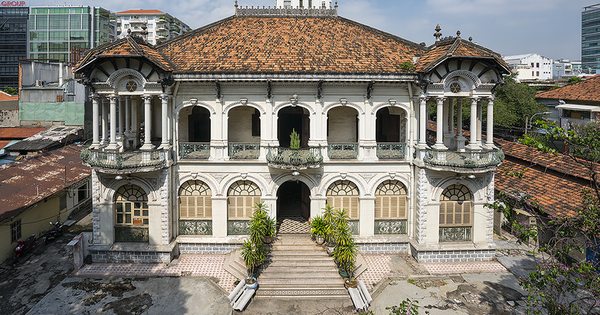Biệt thự 700 tỷ bà Trương Mỹ Lan đề nghị không kê biên có gì đặc biệt? Vì sao bà Lan nhất định muốn giữ?
In a recent court hearing on March 15th, the family of Mrs. Truong My Lan revealed that they had sold assets to raise funds for restitution in a legal case. Among these assets were notable properties such as the 5-star Daewoo Hotel in Hanoi, which belongs to the Bong Sen Joint Stock Company. Mrs. Lan’s family holds a 73% stake in this company. Another property is the Capital Place building located at 29 Lieu Giai Street. However, there is one particular property that Mrs. Lan requested not to be included in the restitution and instead be given to her family for repairs – a historic villa located at 110-112 Vo Van Tan Street in District 3, Ho Chi Minh City. This is the only asset that Mrs. Lan wishes to keep, as it holds significance as a Vietnamese heritage site.
The historic villa is situated at the intersection of Vo Van Tan, Ba Huyen Thanh Quan, and Nguyen Thi Dieu streets. During the vibrant real estate market in 2013, the villa was sold for 47 million USD. In 2015, Mrs. Truong My Lan acquired the property through the Minerva Joint Stock Company for a value of 35 million USD (equivalent to over 700 billion VND at the time). The Minerva Joint Stock Company has three founding shareholders: Truong Hue Van (born in 1988) with a 10% stake worth 20 billion VND, Truong Lap Hung with a 10% stake worth 20 billion VND, and the majority shareholder, Mary Chu Yuet Fan (Chu Duyet Phan), who holds an 80% stake equivalent to 160 billion VND.
Formerly known as the Phuong Nam villa, this historic villa was previously owned by Dang Kim Chi (born in 1938) and Nguyen Kim Sa Dang (born in 1934). The house was built on a 2,819 square meter plot of land and follows French architectural style, featuring two to three levels. The usable space of the villa covers more than 2,500 square meters, with a North-South orientation for each construction block. The main section of the house spans 990 square meters and includes 16 rooms.
According to long-time residents of Saigon, this villa was considered one of the most beautiful houses in the city and was owned by a prominent landlord. The architecture of the Phuong Nam villa is highly regarded and comparable to the Former South Vietnamese Governor’s Palace (now the City Museum) or the Ho Chi Minh City People’s Committee headquarters.
The construction materials for this villa were transported from France by sea. Notable features include the arched gate, surrounding walls, pillars, windows, and main entrance, all made of original wrought iron imported from France.
The villa has three entrances: two main gates on Vo Van Tan Street and an auxiliary gate on Ba Huyen Thanh Quan Street. The main entrance has two layers of doors, with a wooden door inside and a rolling iron door on the outside. The roof is tiled with red tiles, and lightning rods are installed at the roof junctions. Dozens of skilled craftsmen worked for nearly a year to complete this villa.
After acquiring the villa, Mrs. Truong My Lan initiated restoration work based on the original design in 2019. The Singaporean company, Stonewest Limited, was granted a construction permit by the Ho Chi Minh City Department of Construction. French architect Nicolas Viste led the restoration team for the villa.
Mrs. Truong My Lan purchased and restored the villa with the intention of living there. Prior to her arrest, the restoration was still ongoing. However, it was temporarily halted in October 2022. At that time, the exterior of the villa was nearly completed, with the surrounding walls and auxiliary structures almost finished.
In conclusion, the 700-billion-VND historic villa owned by Mrs. Truong My Lan holds significant historical and architectural value. Despite the legal proceedings, Mrs. Lan has made a request to exclude this particular property from restitution, emphasizing its importance as a Vietnamese heritage site.

